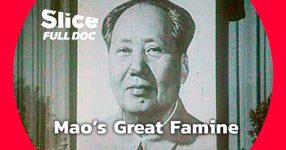The year 1918 marked an unparalleled moment in human history. As World War I raged on, a silent, deadly adversary was poised to engulf the globe. The 1918 Spanish flu pandemic, also known as the “Spanish Lady,” touched the lives of nearly 500 million people, approximately one-third of the world’s population. It left a harrowing trail of destruction, claiming roughly 50 million lives within two short years. Second only to the Black Death of the 1300s, this pandemic is etched in history as one of the deadliest ever witnessed.
The Origin
Contrary to its name, the Spanish Flu did not originate in Spain. The earliest documented cases emerged in March 1918 at a military camp in Fuston, Kansas. This camp, home to approximately 30,000 soldiers undergoing intense training for World War I, witnessed over 100 soldiers falling ill on March 4th. They exhibited common flu symptoms: high fever, body pain, severe cough, and debilitating headaches.
The Spread
Within a month, more than a thousand men were falling victim to the flu each day. However, military authorities remained relatively unconcerned, as most soldiers recovered promptly. Little did they know, the virus was stealthily making its way across Europe as troops were deployed. The ships carrying soldiers became floating incubators of infection. Unfortunately, the priority was getting troops to the frontlines, and little was done to contain the spread.
With over 100,000 soldiers arriving in Europe weekly, mingling with the local population, the world faced an insurmountable challenge in controlling the Spanish Flu.
Silent Epidemic
As the war continued, the virus continued to spread to more countries. Governments, military authorities, and even the media chose silence, fearing the revelation of the extent of the pandemic could cause widespread panic. Spain, a neutral nation, eventually broke the news after their King contracted the flu, leading to the misnomer.
The virus persisted for two more years post-war, with approximately four to five lethal waves. Hospitals were overwhelmed, burials couldn’t keep pace with the death toll, and healthcare systems teetered on the brink of collapse. After months of public health silence, an abundance of information on preventive measures suddenly flooded the public domain.
Global Response
Countries implemented various strategies to combat the spread. Public gatherings were banned, schools, churches, and theaters shuttered, and masks became mandatory. Some opposed these measures, arguing they infringed upon personal freedoms. Schools emphasized handwashing, and social distancing became enforced.
Amid the absence of a definitive cure, countless remedies and treatments emerged, ranging from aspirin to bourbon, scotch, cognac, quinine, and even laxatives. The market was flooded with snake oil and quack treatments, as desperate individuals sought any glimmer of hope.
Approximately 18 to 24 months after the initial cases in Kansas, the pandemic finally subsided. No vaccines were developed; instead, survival was primarily attributed to the development of herd immunity. The Spanish Flu left a devastating legacy in its wake, a chilling reminder of the fragility of global health. The documentary “The Spanish Flu: An Invisible Enemy,” directed by Paul Le Grouyer, provides a poignant account of this dark chapter in history, where a silent, invisible enemy reshaped the world in unprecedented ways.












